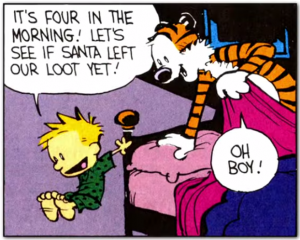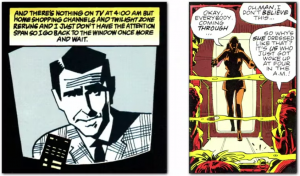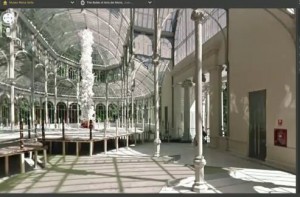Why is it Always Four in the Morning?
If Aliens were to float around examining our culture for a while, they may well decide that four in the morning has a special significance in our culture. It might take them longer to figure out why.
 Which is what American performance poet, storyteller and author, John G. Rives discovered after reading a poem which he couldn’t get out of his head.
Which is what American performance poet, storyteller and author, John G. Rives discovered after reading a poem which he couldn’t get out of his head.
Most of us have had that experience but this one was so convincing that what began as a minor obsession ended up as the creation of the Museum of Four in the Morning…
If you doubt the significance, watch the TED Talk presentation.
If you know why this phenomenon exists, please post your wisdom on the forums.
In an earlier appearance at TED Talks, Rives performed one of his poems, sharing what it would be like…
If I Controlled the Internet
If I controlled the internet
You could auction your broken heart
on Ebay…
Presentations by Rives at TED include
- “If I controlled the Internet”
- “A mockingbird remix of TED2006”
- “The 4 a.m. mystery”
- “A story of mixed emoticons”
- “Reinventing the encyclopedia game”
- “The Museum of Four in the Morning”
Sarah Lewis: The phenomenon of the near win.
own leading edge.”
Art historian Sarah Lewis was surprised while working at the Museum of Modern Art, to discover the regular discrepancy between an artist’s view of much of their work and the way it was perceived by the public.
“How many times have we designated something a classic – a masterpiece even, while its creator considers it hopelessly unfinished, riddled with difficulties and flaws.”
These contrasting views of success inspired her to explore what motivates people to work towards mastery in their pursuits, and how they evaluate their progress. Cezanne, she reminds us, “so often felt that his works were incomplete that he would leave them aside with the intention of picking then back up again, but at the end of his life, the result was that he had only signed ten percent of his paintings”.
Franz Kafka was so critical of his work that he wanted all his notes, diaries and sketches burned upon his death.
“Mastery is not just the same as excellence though. It’s not the same as success which I see as an event, a moment in time and a label that the world confers upon you. Mastery is not a commitment to a goal but to a constant pursuit…”
http://sarahelizabethlewis.com/
Sarah Lewis’s book “The Rise” was published earlier this year.
“It is one of the enduring enigmas of the human experience: many of our most iconic, creative endeavors—from NobelPrize-winning discoveries to entrepreneurial inventions and works in the arts—are not achievements, but conversions, corrections after failed attempts.
The gift of failure is a riddle. Like the number zero, it will always be both the void and the start of infinite possibility. The Rise—part investigation into a psychological mystery, part an argument about creativity and art, and part a soulful celebration of the determination and courage of the human spirit—makes the case that many of our greatest achievements come from understanding the importance of this mystery. “
Read MoreThe Google Art Project: Explore to Your Art’s Delight
The Google Art Project is a unique collaberation between Google and some of the world’s leading art museums, which enables people to discover some of the best works of art from around the world and examine them in high resolution detail.
Using the Street View technology of Google Earth one is able to move around the museums using interactive floor plans.
It is an exciting way to learn more about the museums, galleries and art treasures of the world that interest you the most, and then go on to explore further afield and make new discoveries for yourself.
This is also an excellent way to plan in advance for your visit in real-life to one of these museums, as you can do all the “groundwork of research” in from the web – perhaps this could be called “cloudwork” or “cloudplanning”, or maybe designing a “cloudjourney”?
You can experience incredible close-up views of the artwork which you can zoom into – look at the brush-strokes an artist uses, in microscopic detail – a wonderful way to get the feeling of the personality and creative style of the artist. It is easy to move around paintings.
You can find more work by the same artist or learn more about the work by reading the detailed descriptions or listening to an audio tour. You can watch YouTube videos created by the museum or gallery themselves, while you are exploring the paintings.
Use the drop-down menus to choose a museum and to find artworks from that museum or find a specific work you are looking for. A way to discover hidden secrets, and work you would never otherwise have found.
Of course, cloud travel gives you the ability to walk through walls, fly along corridors, hop from one room to another or float up through the ceiling to explore another level, so it does mean you can cover a lot of ground a lot easier. And you won’t wear out the soles of your shoes as quickly either.
You can also create your own collection of favourite work, and then share it with friends, or perhaps use it while teaching your art class. Your very own collection of the best in the world, available at your fingertips… why not become an art collector?
http://youtu.be/GThNZH5Q1yY
Things you can do with the Google Art Project:
•Explore museums with Street View technology: virtually move around the museum’s galleries, selecting works of art that interest you, navigate though interactive floor plans and learn more about the museum and you explore.
•Artwork View: discover featured artworks at high resolution and use the custom viewer to zoom into paintings. Expanding the info panel allows you to read more about an artwork, find more works by that artist and watch related YouTube videos.
•Create your own collection: the ‘Create an Artwork Collection’ feature allows you to save specific views of any of the 1000+ artworks and build your own personalised collection. Comments can be added to each painting and the whole collection can then be shared with friends and family.
It has never been more fun or stimulating to prepare yourself to get the most out of your real-life visit.
Read More




